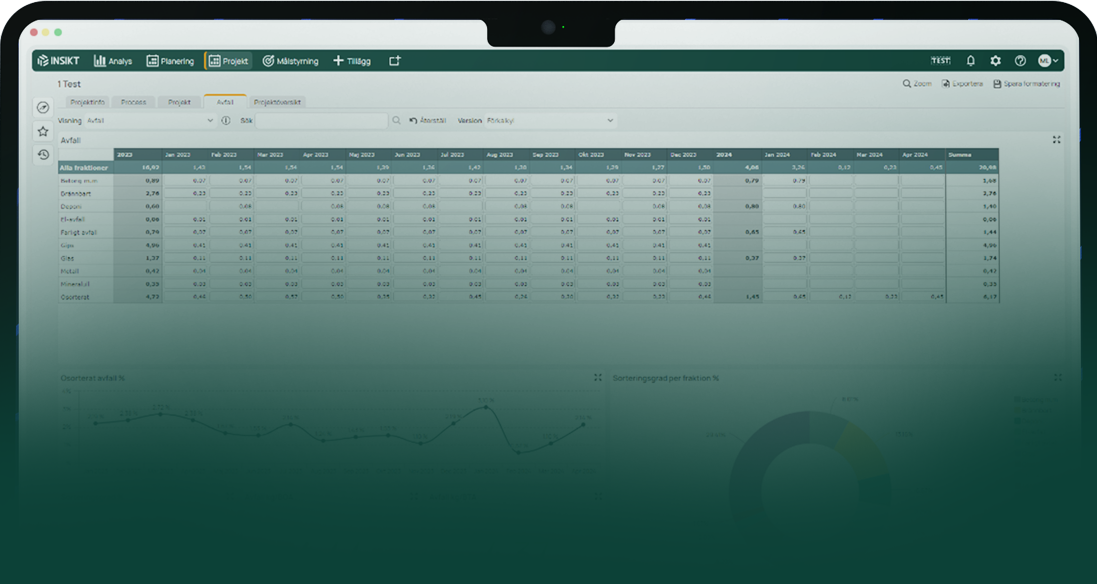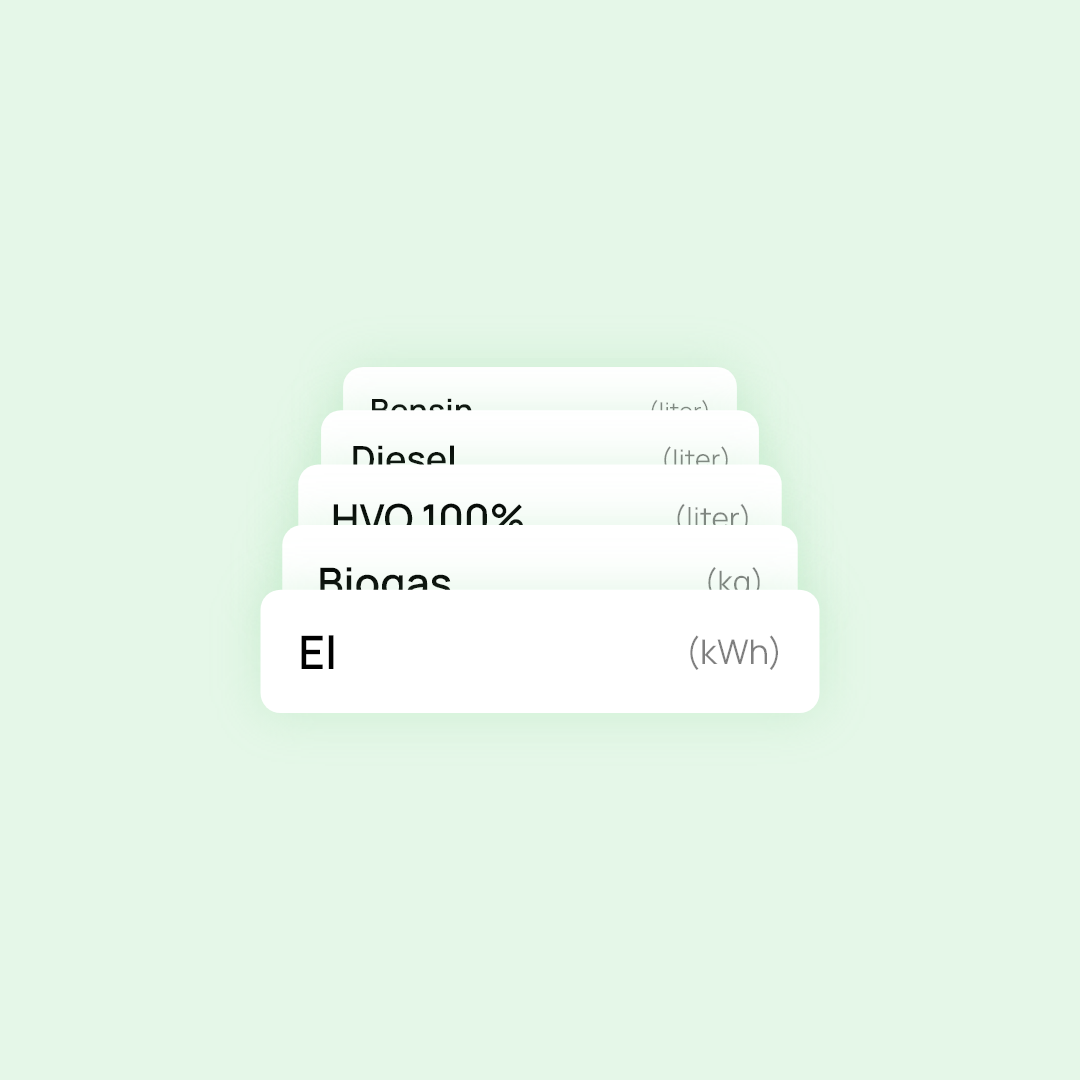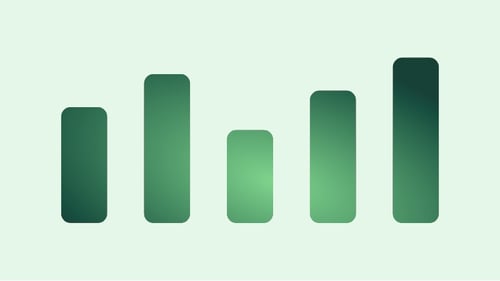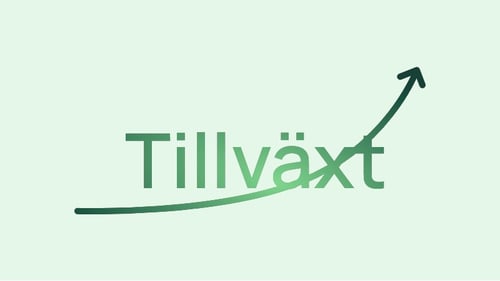Sustainability reporting
Climate impact - quick and easy
Easily measure, report and reduce carbon emissions across all areas to build your climate strategies on robust data and understand your impact.
Reduce uncertainty in your reporting
Make it easy to collect data about your climate impact and report tailored to your company's requirements.

Save time
INSIKT is packed with features that help you report and follow up faster and more accurately.
Involve the right people
With advanced authorization control, you can easily involve more people in the work without being nervous that someone sees something they shouldn't.
Reduce manual labour
Let the data flow into INSIKT and avoid manually collecting and compiling the data. Automatic data loading makes it easy to keep track.

Collect all emission factors in one place
Manage
Add new ones, adjust previous ones and let your solution grow with you. With flexible version management, you quickly see how things change over time.
Communicate
INSIKT is packed with functions to facilitate collaboration. Comment on the data and let your colleagues know what you've come up with.
Analyze
With all the data in one tool, you can easily twist and turn the information. Build dashboards for sustainability data or identify trends between different sources without expensive costs.
Automate reporting
Spend-based
For the parts that are made on an expense basis, INSIKT simply reads out from the general ledger. In this way, you can combine expenses on specific accounts with the right emission factor to calculate a climate impact
Consumption-based
For the parts of the accounting that are based on consumption, INSIKT functions as a collection for different data sets. For example, waste management in projects, energy consumption in various properties or consumption of building materials. These are then combined with the correct emission factor so that you get a complete calculation.


Spread responsibility for reporting
With INSIKT, you quickly ensure that the right person is responsible for reporting the right data. Let property managers specify waste quantities in their properties, or project managers ensure that the building material is correctly reported in a project. The environmental manager easily gets an overall picture of the climate impact without having to hunt for the right data.

Effektivisera sammanställning av data
Postclick, a global leader in digital advertising, was looking for a video messaging platform

Fördela arbetet
Postclick, a global leader in digital advertising, was looking for a video messaging platform

Väx och anpassa
Postclick, a global leader in digital advertising, was looking for a video messaging platform

Samla alla emissionsfaktorer på en plats
Administrera
Lägg till nya, justera tidigare och låt din lösning växa tillsammans med dig. Med smidig versionhantering ser du snabbt hur saker förändras över tid.
Kommunicera
INSIKT är fullpackat med funktioner för att underlätta samarbetet. Kommentera data och låt dina kollegor veta vad du kommit fram till.
Analysera
Med all data i ett verktyg kan du enkelt vrida och vända på informationen. Bygg dashboards för hållbarhetsdata eller identifiera trender mellan olika källor utan dyra kostnader.
Automatisera rapporteringen
Efter nya direktiv från EU är det inte konstigt att begrepp som ESG blivit väldigt populärt. Denna ökade popularitet gör sig extra tydlig utifrån tre olika vinklar.
Utgiftsbaserat
För de delar som görs utgiftsbaserat läser INSIKT enkelt ut från huvudboken. På så vis kan du kombinera utgifter på specifika konton med rätt emissionsfaktor för att räkna fram en klimatpåverkan
Konsumtionsbaserat
För de delar av redovisningen som sker konsumptionsbaserat fungerar INSIKT som samling för olika datamängder. Till exempel avfallsshantering i projekt, energiåtgång i olika fastigheter eller åtgång av byggmaterial. Dessa kombineras sedan med rätt emissionsfaktor så att du får en färdig beräkningen.


Fördela ansvaret för rapportering
Med INSIKT ser du snabbt till att rätt person ansvarar för att rapportera rätt data. Låt fastighetsförvaltare ange avfallsmängder i sina fastigheter, eller projektledare säkerställa att byggmaterialet är rätt redovisat i ett projekt. Den miljöansvarige får enkelt en samlad bild av klimatpåverkan utan att behöva jaga rätt på data.
Frequently asked questions about climate impact
What does it mean to report climate impact?
Reporting climate impact means, among other things, accurately measuring and tracking the greenhouse gas emissions that an organization generates in order to evaluate its impact on the environment. By quantifying carbon dioxide emissions, companies and individuals can increase their awareness of and management of their impact on the climate. Accurate reporting is a valuable resource for companies, enabling the development of strategies to reduce emissions and promote sustainable practices. Usually the results are expressed in units of carbon dioxide equivalents or CO2e, which includes not only carbon dioxide but also other greenhouse gases.
What are GHG and scope 1,2 and 3?
The Greenhouse Gas Protocol (GHG) is an organization that provides the most widely accepted global standards for reporting climate impacts by the public and private sectors. This organization establishes guidelines for how companies can define their organizational boundaries for reporting greenhouse gas emissions and defines the division of these emissions into Scope 1, 2 and 3. The aim is to give companies a clear overview of where their emissions occur both within their own operations and in the wider value chain. The GHG Protocol provides guidance on what should be reported, how the reporting should be carried out and how data and emission factors can be collected and used.
Scope 1
Direct greenhouse gas emissions from sources owned or controlled by the organization, such as on-site fuel combustion and process emissions, which directly affect the company's carbon footprint.
Scope 2
Indirect greenhouse gas emissions from the production of purchased and used electricity, steam, heating and cooling.
Scope 3
Other indirect greenhouse gas emissions that arise from sources not owned or controlled by the organization but where it has indirect responsibility along the entire value chain, for example when purchasing, using and disposing of products from suppliers.
What are carbon dioxide equivalents?
A carbon dioxide equivalent (CO2e) is a unit used to standardize and compare different greenhouse gases based on their global warming potential relative to carbon dioxide. This means that different greenhouse gases are converted into the amount of carbon dioxide that would have the same impact on the climate during a specified period of time. Carbon dioxide equivalents are often used in climate accounting and analysis to provide a uniform yardstick for different emissions and facilitate the assessment of their total climate impact.
What are emission factors?
Emission factors are numbers that measure how much greenhouse gas emissions are generated per unit of a specific activity, such as fuel combustion or energy consumption. These factors act as conversion tools and facilitate the evaluation of environmental impacts in different sectors by assisting in estimating emissions. This is done by multiplying the emissions with the relevant activity data.